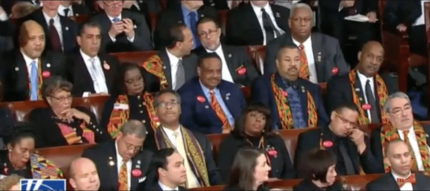While the Black unemployment rate in the U.S. for the past several decades has remained stuck at double the overall rate, an African-American economist suggests that this is partly because of something she calls the “resilience factor”— unemployed African-Americans are less likely to give up their job search than other unemployed workers
Valerie Rawlston Wilson, director of the Washington, D.C.-based Economic Policy Institute’s Program on Race, Ethnicity and the Economy (PREE), acknowledged that part of the reason the gap between the Black and white unemployment rates has increased during the economic recovery is because the Black rate (11.5 percent last month) has fallen slower than the white rate (6.3 percent last month).
But another part of the explanation is that African-Americans don’t give up.
“Relative to whites, a higher share of jobless blacks have continued to seek work — which means they have remained in the labor force and therefore been counted as unemployed,” Wilson writes on the Economic Policy Institute website. “This is reflected in the fact that the percentage of blacks in the labor force (employed or actively seeking work) has fallen by less than the comparable figure for whites (a 2.8 percentage-point decline versus a 3.3 percentage-point fall). Put simply, the resilience of African American labor force participation is actually contributing to the growing black–white unemployment rate gap.”
This statistical fact is due to the way the Bureau of Labor Statistics calculates the unemployment rate, basing it only on people who say they are continuously looking for jobs. In May, the size of the African-American labor force was estimated at 18.7 million, with 2.15 million African-Americans searching for work. The labor force for white Americans was estimated at 123.3 million, with just about 6.6 million white Americans searching for work.
While Wilson broke down the Black unemployment rate, Jorge Newbery, the founder and chief executive officer of American Homeowner Preservation LLC, wrote a piece for The Huffington Post explaining how African-Americans continue to be disproportionately devastated by the housing crisis — while white communities have largely recovered.
“There are more than 4.4 million families who are delinquent on their mortgages, and almost 10 million who are severely underwater, owing at least 25 percent more than their homes are worth,” Newbery writes. “[T]he burden is being disproportionately borne by families of color: in 64 percent of the hardest-hit zip codes, African Americans and Latinos accounted for at least half of the population and, in 146 of the 395 hardest-hit zip codes, African Americans and Latinos account for at least 75 percent of the population.”
Newbery points out that homeownership accounts for 92 percent of the wealth of African Americans, compared to 67 percent for Latinos and 58 percent for Whites.
“Between 2005 and 2009, the household wealth of African Americans declined by 52 percent, Latinos plummeted by 66 percent and Whites dipped by 16 percent,” he writes. “Today, 15 percent of Whites are underwater, whereas African Americans are 86 percent more likely to be underwater than Whites and Latinos 36 percent more likely. Take away a minority family’s home and there is often little left: the median liquid wealth is $200 for African Americans and $340 for Latinos, compared to $23,000 for Whites.”
“Sadly, all of this should come as no surprise. A decade ago, big banks would routinely steer borrowers — disproportionately minorities — who qualified for conventional loans to immensely more profitable subprime mortgages, which carried terms that set up borrowers to fail,” Newbery writes. “Wells Fargo’s loan agents allegedly even joked about peddling ‘ghetto loans’ to ‘mud people,’ spewing racial slurs which make Donald Sterling’s recent remarks look tame in comparison. Wells Fargo’s CEO was ‘grilled’ by Congress, yet the bank has largely gone unpunished and went on to become the most profitable bank in the U.S.
“However, take a drive through any hard-hit community and witness the aftermath: scores of vacant, boarded up homes which once represented the American Dream now look like Wells Fargo’s discarded trash. Wall Street bankers have gobbled up entire communities like Happy Meals, slurped up modest family wealth as if it were soda through a straw, tossed families out of their homes like unwanted packets of ketchup and littered streets with empty homes as if they were used-up fast food containers.”

